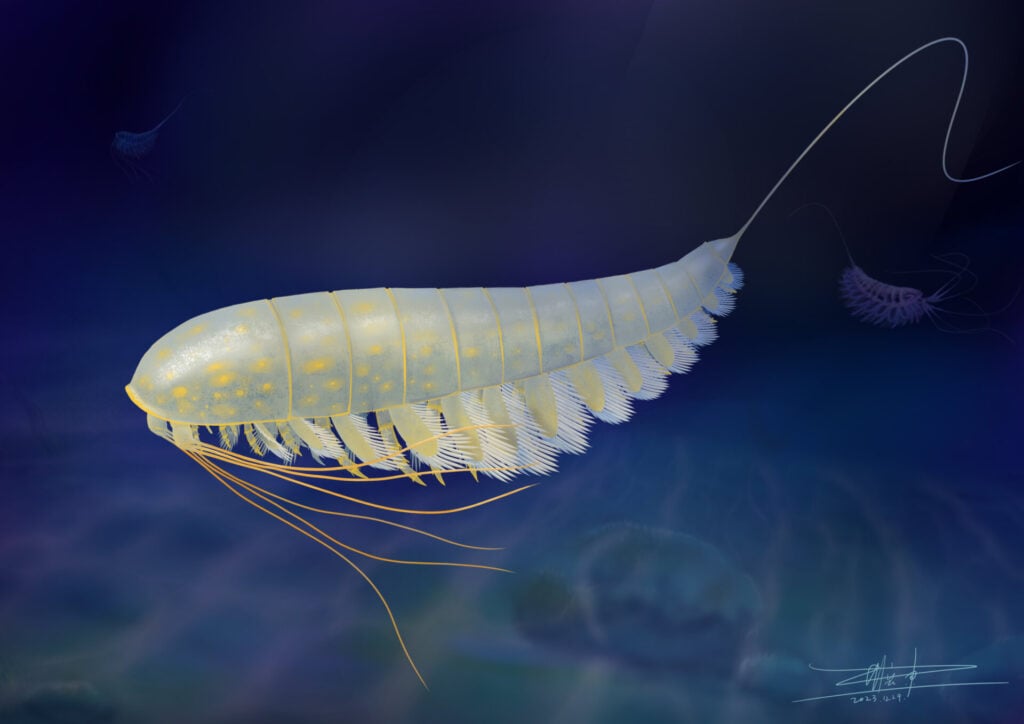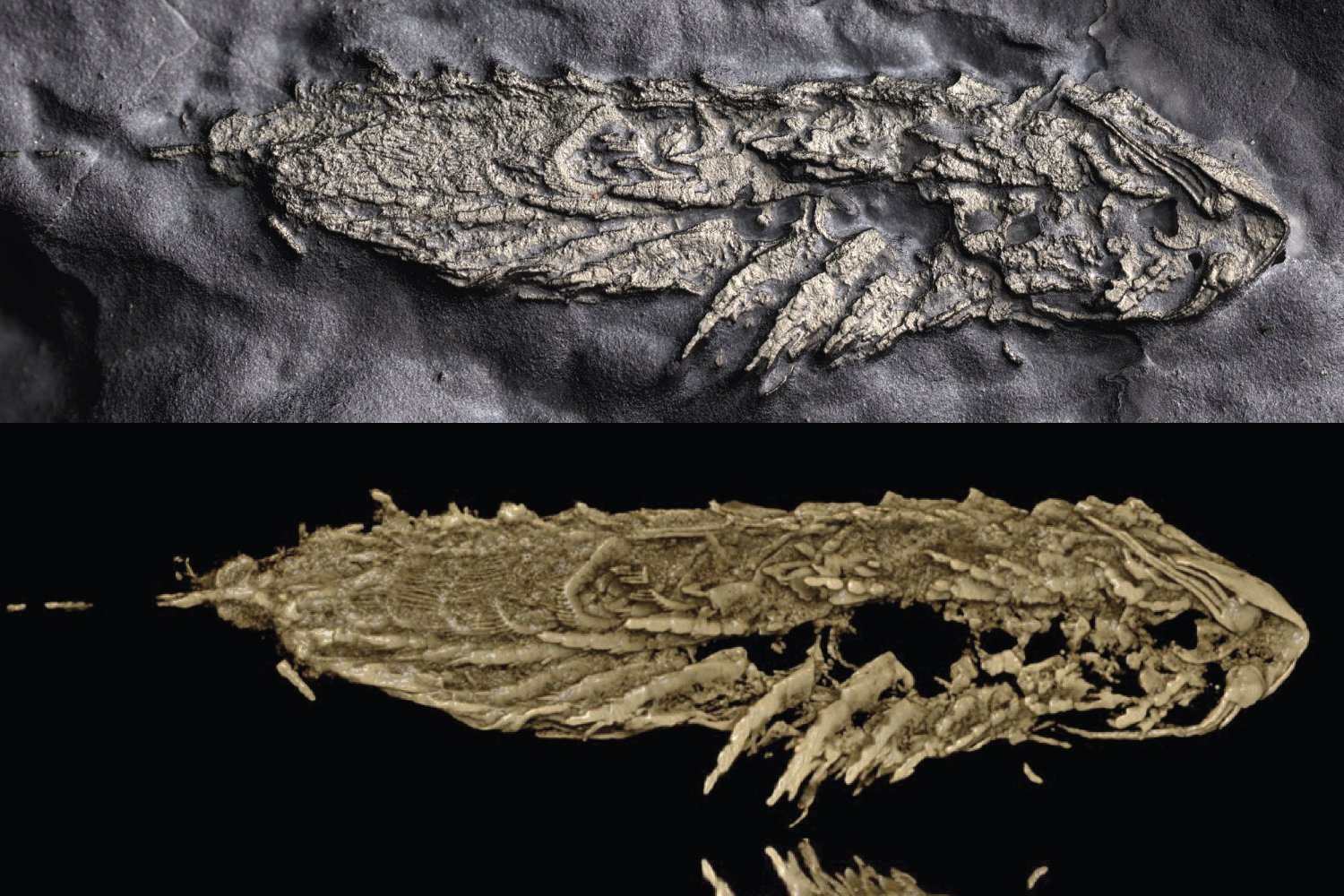The fossilized remains of a 450-million-year-old extinct arthropod, shimmering with a golden hue, have been unearthed near Rome, New York. Preserved in iron pyrite, often called fool’s gold, these remarkable specimens offer a unique glimpse into prehistoric life. A new study published in Current Biology details the discovery and analysis of this ancient creature, named Lomankus edgecombei.
The fossils were found in Beecher’s Bed, a renowned fossil site. “These fossils are spectacularly preserved,” said Luke Parry, a paleobiologist at the University of Oxford and lead author of the study. “They look as if they could just get up and scuttle away.” This exceptional preservation is due to the low-oxygen environment where Lomankus lived, which facilitated fossilization in sediment layers. Over time, the pyrite replaced the arthropod’s tissues, creating a three-dimensional representation of the creature.
 A life reconstruction of Lomankus.Lomankus reconstruction. Illustration: Xiaodong Wang.
A life reconstruction of Lomankus.Lomankus reconstruction. Illustration: Xiaodong Wang.
Using CT scanning technology, the researchers created 3D images of Lomankus, revealing its unique anatomy. The arthropod belonged to a group called megacheirans, characterized by a “great appendage” at the front of their bodies. This modified leg likely served a sensory function, helping Lomankus navigate its environment and locate prey.
The golden fossils showcase Lomankus’ underbelly, mouth parts, and delicate flagella on its great appendage. These features offer valuable insights into the arthropod’s sensory capabilities and feeding habits. “There are more species of arthropod than any other group of animals on Earth,” Parry explained. “Part of the key to this success is their highly adaptable head and its appendages, which have adapted to various challenges like a biological Swiss army knife.”
 Close-up view of the fossilized Lomankus, highlighting its golden color.Fossilized Lomankus showcasing its golden hue due to pyrite preservation.
Close-up view of the fossilized Lomankus, highlighting its golden color.Fossilized Lomankus showcasing its golden hue due to pyrite preservation.
The discovery of Lomankus provides valuable information about the evolution and diversity of ancient arthropods. While not as precious as true gold, the pyrite preservation offers a unique aesthetic quality, making these fossils both scientifically significant and visually captivating.
Pyrite deposits, like the one where Lomankus was found, are common across the eastern United States. Interestingly, some pyrite crystals can contain traces of real gold. Furthermore, pyrite is being investigated for its potential role in lithium sequestration, a crucial element for battery technology.
While not everything that glitters is gold, the pyrite-preserved Lomankus fossils from central New York offer a remarkable window into the past, highlighting the fascinating ways ancient life can be preserved for hundreds of millions of years.











